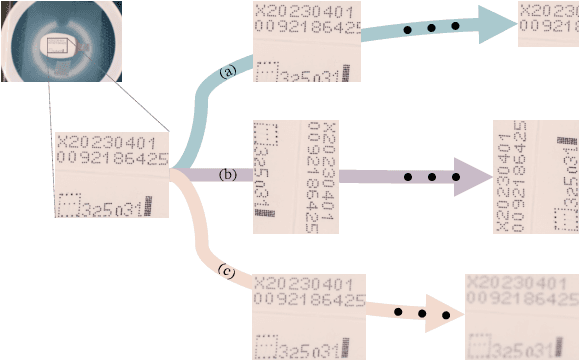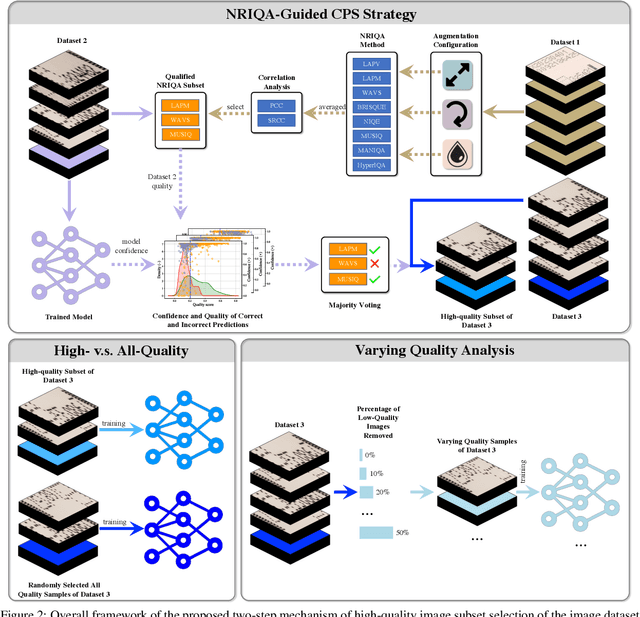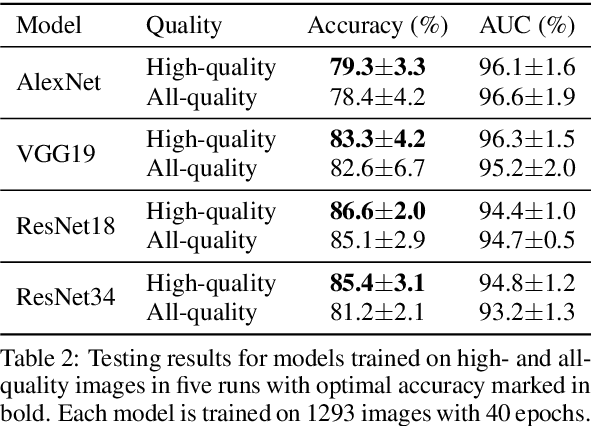How Quality Affects Deep Neural Networks in Fine-Grained Image Classification
Paper and Code
May 09, 2024



In this paper, we propose a No-Reference Image Quality Assessment (NRIQA) guided cut-off point selection (CPS) strategy to enhance the performance of a fine-grained classification system. Scores given by existing NRIQA methods on the same image may vary and not be as independent of natural image augmentations as expected, which weakens their connection and explainability to fine-grained image classification. Taking the three most commonly adopted image augmentation configurations -- cropping, rotating, and blurring -- as the entry point, we formulate a two-step mechanism for selecting the most discriminative subset from a given image dataset by considering both the confidence of model predictions and the density distribution of image qualities over several NRIQA methods. Concretely, the cut-off points yielded by those methods are aggregated via majority voting to inform the process of image subset selection. The efficacy and efficiency of such a mechanism have been confirmed by comparing the models being trained on high-quality images against a combination of high- and low-quality ones, with a range of 0.7% to 4.2% improvement on a commercial product dataset in terms of mean accuracy through four deep neural classifiers. The robustness of the mechanism has been proven by the observations that all the selected high-quality images can work jointly with 70% low-quality images with 1.3% of classification precision sacrificed when using ResNet34 in an ablation study.
 Add to Chrome
Add to Chrome Add to Firefox
Add to Firefox Add to Edge
Add to Edge